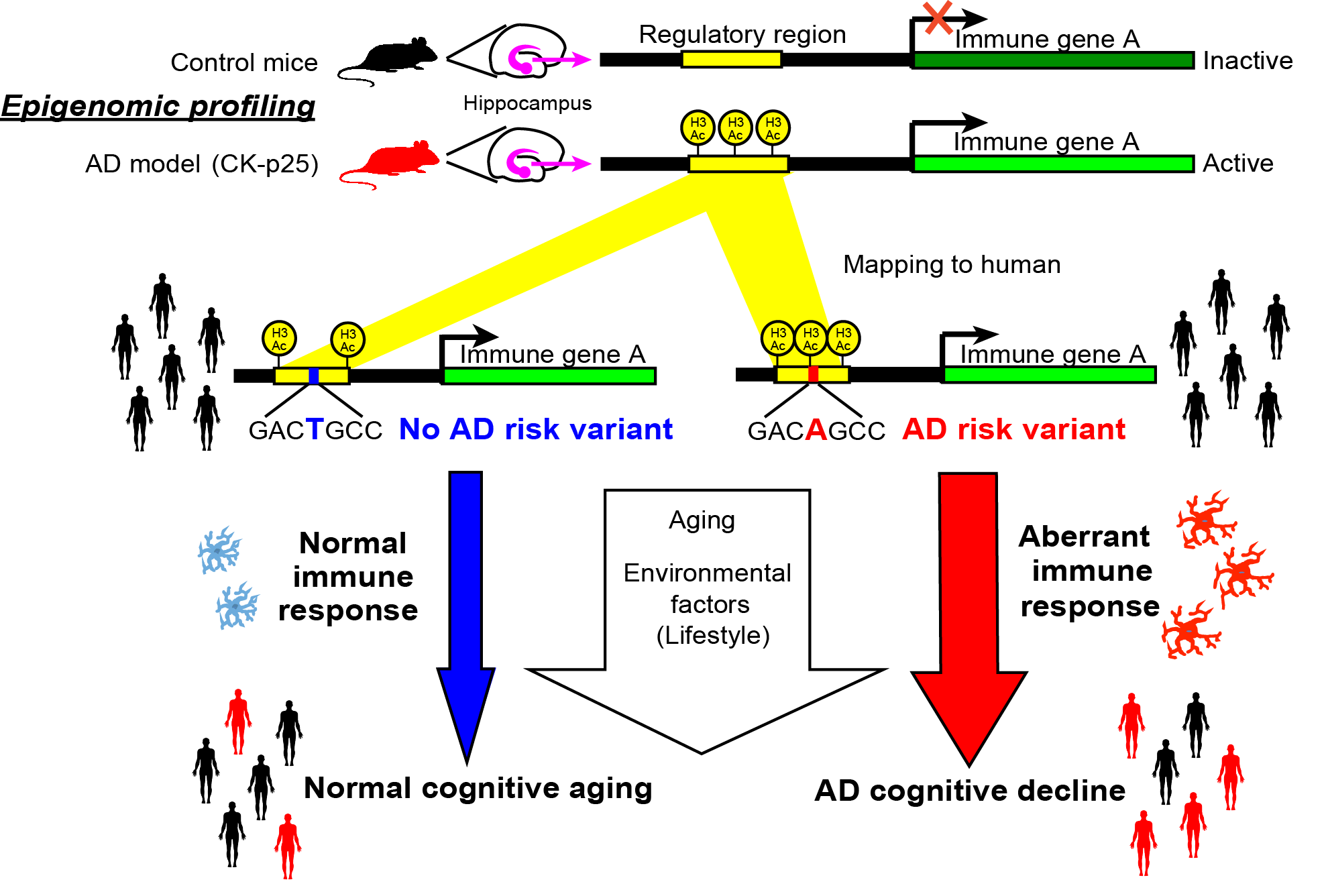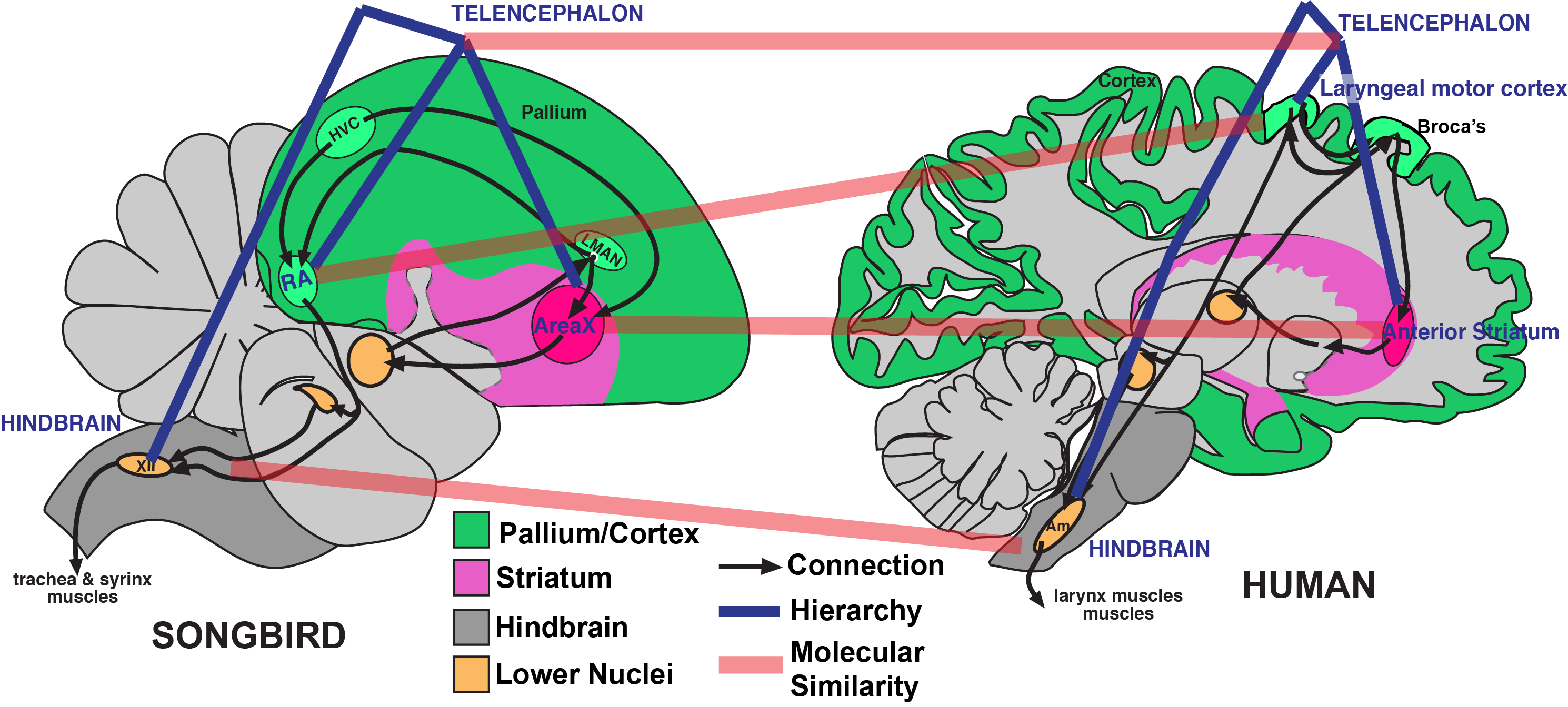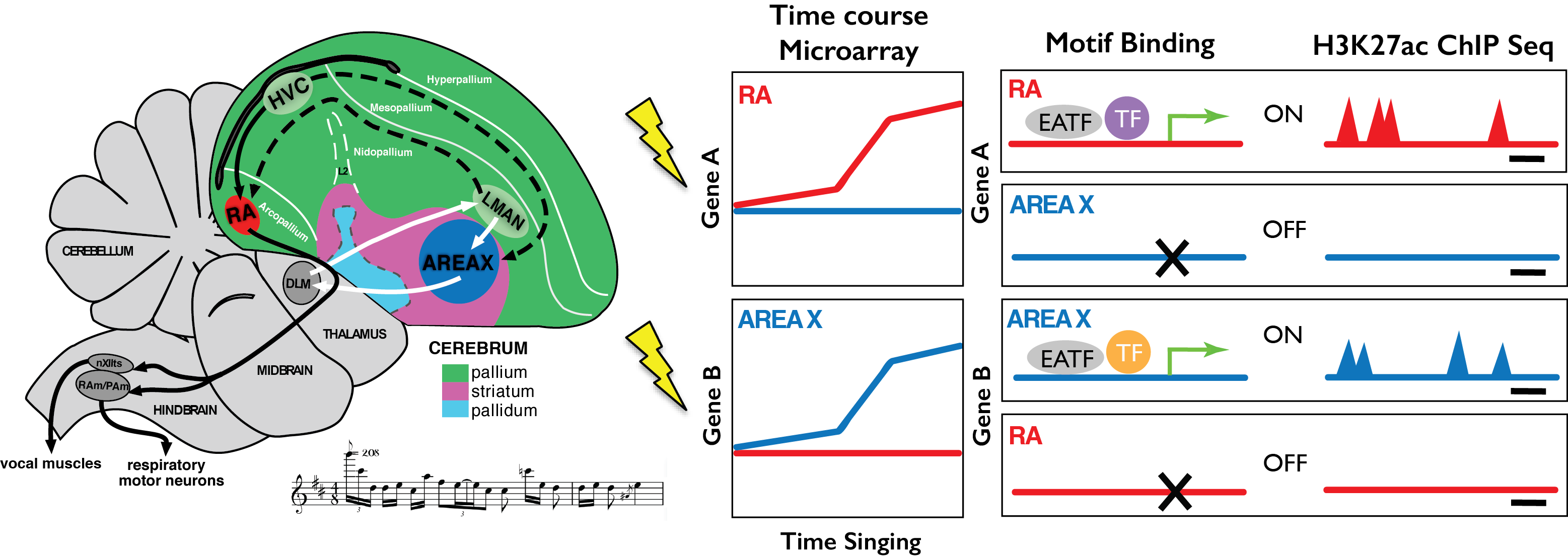
Projects
Conserved epigenomic signals in mice and human reveal immune basis of Alzheimer's disease
Alzheimer’s disease is a severe age-related neurodegenerative disorder characterized by cognitive decline as well as the accumulation of beta-amyloid and neurofibrillary tangles. Recent genome-wide association studies have found regions of the genome that are associated with Alzhiemer's disease, but identifying the function of those regions remains a challenge.

We profiled transcriptional and chromatin state dynamics across early and late pathology in the hippocampus of an inducible mouse model of Alzheimer's-like neurodegeneration and found a coordinated downregulation of synaptic plasticity genes and regulatory regions, and upregulation of immune response genes and regulatory regions. Surprisingly, the human regions orthologous to increasing-level enhancers were strongly enriched for genetic variants associated with Alzheimer's. Our results reveal new insights into the mechanisms of neurodegeneration and establish the mouse as a useful model for functional studies of AD regulatory regions.
Convergent transcriptional specializations in the brains of humans and song learning birds
Vocal learning is the ability to mimick sounds and is the basis speech in humans and song production in bird. Song-learning birds and humans share independently evolved similarities in brain pathways for vocal learning that not found in most other species; thus, vocal learning is an example of convergent evolution. In this study, looked for a molecular signature of convergent evolution in the gene expression patterns within brain regions that control speech in humans and song in birds.

Comparisons of brain transcriptomes of song-learning birds and humans relative to vocal non-learners identified convergent gene expression specializations in the motor production regions of song learning birds and in the human laryngeal motor cortex. The genes that comprise this convergent specialization are enriched for neural connectivity and motor disorders, suggesting that they contribute to the developmen and maintenance of neural circuit for speech and song. Thus, we find that convergent behavior and neural connectivity for a complex trait is associated with convergent specialized expression of multiple genes.
Epigenomic state across brain regions mediates induction of gene expression during behavior
While an animal is producing behavior, neural activity flows through a circuit of brain regions and activates a transcriptional response in those regions. This gene expression response is necessary for long-term changes to neurons that form the basis of learning and memory. To understand the transcriptional mechanisms underlying the gene expression response, we mapped the time-dependent singing-regulated transcriptome in four interconnected brain regions that control singing behavior in songbirds, which is used as model for speech production in humans.

Hundreds of genes were regulated by behavior, the vast majority of which were different across brain regions. We tested the hypothesis that brain region specific induction of gene expression is mediated by the underlying epigenetic state of that brain region by performing ChIP-Seq for the histone modification H3K27ac. As predicted, genes that were preferentially induced in a brain region were near brain-region specific enhancer and promoter elements, present even before the bird begins to sing. These regulated genes were enriched for relevant functions, including calcium signaling and motor disorders. This work shows that the epigenetic state of brain regions has a strong influence behaviorally inducted transcriptional networks and is likely to mediate the specific role that a brain region plays in controlling behavior.